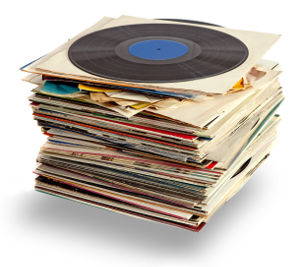If you’re a child of the 1980s you’ll remember the joys of Sunday evenings. You’d have your dinner – something light like a salad with boiled potatoes because you’d already had a roast for lunch. You’d then have a bath. Your parents would probably watch Last of the Summer Wine and The Antiques Roadshow. Meanwhile, you’re in your bedroom doing some last minute homework whilst listening to the Top 40 on Radio 1.
Back then of course, the chart seemed quite simple. Some singles (on 7-inch and 12-inch vinyl) would be released and they’d be sold in record shops such as HMV, Virgin or Our Price. You’d buy some with your pocket money. Then a chart would be compiled by a company called Gallup. They’d tell Radio 1 what the chart was and it would be broadcast. The single that was number 1 was there because it was the song that most people went out and bought. However, things are a little more complicated these days.
The Vinyl Countdown
For a start, the one remaining big name music store – HMV – doesn’t really stock singles any more. Vinyl might be making a comeback but that’s mostly albums (or LPs in old money). For a while singles were popular on CD but even that format, as a single, is now as rare as a decent X Factor winner. Most artist’s singles tend to be quite literally a single track released for download. So we don’t really get the pleasure of listening to a rare, obscure b-side or having some nice artwork on a sleeve.
Those of us old enough to remember the 1980s will treasure the memories of how singles used to be. You’d get the big hit on one side, then flip it over to discover whatever was on the b-side. Sometimes, if you were lucky it would be a brand new song. If you were unlucky it would be an album track or an instrumental version of the a-side. Then there would be limited editions: maybe a picture disc or a version housed in a gatefold sleeve or a poster bag.
Click Me with Your Rhythm Stick
Anyway, buying these items would propel your favourite pop star up the charts. Clicking “download” is hardly the same as wandering the record aisles with your mates spending your pocket money. But just downloading a track onto your iPhone isn’t the only way a song can make it in the Top 40 today.
The Official Charts Company has announced that “streaming” songs will also count in the charts. This is where you go to a site such as Spotify or Napster, pay a monthly fee and then select songs to play. They don’t get downloaded onto your music files on your computer or your iPlayer so they can only be played when you’re logged into the site or have opened the app on your smartphone.
Islands in the Stream
Playing a track for more than 30seconds counts as a “stream” and a single user’s contributions won’t count to the chart statistics after more than 10 plays per week. This is in order for a single user to not be able to “fix” a song’s performance in the charts. 100 total streams between all users will count as 1 physical purchase of a song in chart terms.
So will adding “streams” really make a difference to the charts? Not massively. But there could come a time when streaming is preferred to downloads. In much the same way that downloading a single ended up as a preference to buying a physical copy.
Kids
Some may say that the charts no longer count because people can’t be bothered to buy music in the traditional way or because they’re happy to hear it on the radio without physically owning it. Remember, people can play music videos endlessly on You Tube without having to purchase anything. However, such things as radio airplay and You Tube plays don’t count in the official charts.
No doubt the official UK singles chart will continue to adapt and change according to the many ways we listen to and purchase our favourite songs. One thing that can’t be regained though, is recording the Radio 1 Top 40 on a cassette tape (which was of course wildly illegal). The great art was to press the pause button just as Bruno Brooks was about to talk and then release it just as he’d finish speaking. The ability to achieve this faultlessly through the entire broadcast was a great skill; the likes of which, kids today will never know.
For the BBC’s article on streaming, click here… http://www.bbc.co.uk/news/entertainment-arts-27924176
For the Official Chart Company’s site, click here… http://www.officialcharts.com/
Tell us what you think...
Share on Twitter





